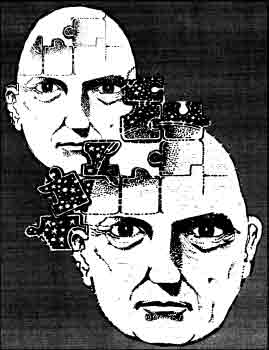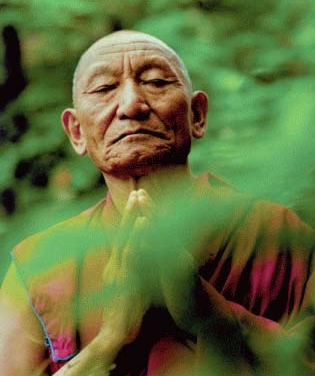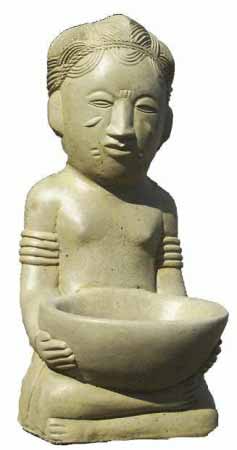The poor intellectual animal, mistakenly called man, needs élan, encouragement, needs something to animate him to battle, a stimulus for the work upon the self. I know that the poor intellectual animal is weak by his nature and is in a completely disadvantaged situation. The ego is highly strong and the personality is very weak; to leave it like this it could barely walk. He needs something to animate his work, he needs an intimate support. This thing is possible only through MEDITATION
First of all it is necessary to learn to live from moment to moment; to know to take advantage of every moment, to not measure the moment. The moment of now is the specific characteristic of the gnostics. We love the philosophy of now.
On a certain occasion the Master Nansen was asked:
- What is TAO?
- Ordinary life!
- What can be done to live according to it?
- If you try to live according to it, it will run from you. Do not try to sing this song, let it sing itself. Does the poor hiccup come alone?
Remember this phrase: 'Gnosis is lived in deeds, withers in abstractions and is difficult to find even in the most noble thoughts'.
The Master Bokujo was asked:
- Must we dress and eat every day? How can we escape all those?
The Master answered:
- We eat, we dress...
- I do not understand – says the disciple.
- Than get dressed and eat – says the master.
This is precisely the action free of the opposites. Do we eat? Do we dress? Why make a problem out of this? Why do we think about other things while we eat and dress?
If you eat, eat, and if you dress, get dressed and if you walk on the street, walk, walk, but do not think about other things, do only what you do, don’t run from what you do, don’t run from facts, do not fill them with so many meanings, symbols, preaches and warnings. Live them without allegories, live them with the receptive mind moment by moment.
This continuous tension of the mind, this continuous tension takes us to the awakening of the consciousness. If we eat and we think about business, it is clear that we dream. If we drive an automobile and we think about the fiancée, it is logical that we are not awakened, we dream. If we work and at the same time we remember the godfather or the godmother, the friend, the brother etc., it is clear that we dream.
The effort and the vigil state needed second after second, moment by moment, for not falling into dreaming, are tremendous. A minute of negligence is sufficient and the mind already dreams recalling something, thinking about various things at work or about the fact we live in that moment.
THE TECHNIQUE

When we practice meditation our mind is assaulted by many memories, desires, passions, preoccupations etc.
We must avoid the conflict between attention and distraction. There is conflict between distraction and attention when we fight against these attackers of the mind. The I is the projector of these mental attackers. Where there is conflict, there is neither silence nor quietude.
We must cancel the projector through self-observation and comprehension. Examine every image, every memory, every thought that reaches the mind. Remember that every thought has two poles: positive and negative.
The entrance and the exit are two aspects of the same thing. The kitchen and the bathroom, tall and short, agreeable and disagreeable etc., are always the two poles of the same thing.
Examine the two poles of each mental form that reaches the mind. Remember that only through the study of the polarities the synthesis is reached.
Any mental form can be eliminated with the help of the synthesis.
Example: The memory of a fiancée assaults us. Is she beautiful? Let us think that beauty is the opposite of ugliness and if at youth she is beautiful, at old age she will be ugly. Synthesis: It’s not worth it to think of her, it is an illusion, a flower that withers inevitably. In India, this self-observation and study of our psyche is precisely called Pratyahara.
The farcical thoughts must pass through the space of our mind in successive parade, but without leaving a trace. The infinite procession of the projection of thoughts by the I, finally gets tired and then, the mind remains silent and quiet.
A great self-realised Master said: 'Only when the projector, meaning the I, is totally absent, then silence intervenes which is not a product of the mind. This silence is inexhaustible, it doesn’t belong to time, is incommensurable, only then appears what is'.
The entire technique resumes to two principles:
- Profound Reflection.
- TTremendous Serenity.
THE PROFOUND REFLECTION

We need serene reflection if we truly want to reach the absolute silence and quietude of the mind.
However, it is clear the necessity to understand the fact that in the pure Gnosticism, the notions serenity and reflection have much more profound acceptations, and ultimately they must be understood with special connotations.
The feeling of serenity transcends what normally is understood by calm and quiet, it implies a superlative state that is beyond thoughts, desires, contradictions and words; it designates a situation beyond the worldly racket.
In the same way, the feeling of reflection is well beyond what is usually understood by the contemplation of a problem or an idea. It is not about the mental activity or the contemplative thinking but about a sort of objective, clear and reflexive conscience, always enlightened in its own experience.
For this reason, 'serene' means the serenity of non-thinking and 'reflection' means intense and clear conscience. 'The serene reflection means clear conscience in the silence of non-thinking'.
When perfect serenity reigns, true profound enlightenment is reached.
STEPS TO FOLLOW

Any serious student who wants to thoroughly study in the field of Self-knowledge, must value and appreciate these rules, practise them with responsibility, therefore it is the only way in which we learn to meditate.
THE FIRST STEP:
The absolute relaxation of the entire body. It is indispensable to learn to relax the body for Meditation; not one muscle may be in tension.
It is indispensable, necessary, to practice with the physical eyes shut with the purpose of avoiding the external sensory perceptions. It is urgent to eliminate the external sensory perceptions during the inner profound meditation.
THE SECOND STEP:
To become fully conscious of the mood we are in before the occurrence of any thought.
The basic principal, the vivid foundation of Shamadhi consists of a previous introspective knowledge of oneself. To introvert during the profound meditation is indispensable. We must begin by knowing profoundly the animical state which we find ourselves in, before any mental form appears in the intellect.
It is urgent to understand the fact that any thought that appears in the mind is always preceded by pain or pleasure, joy or sadness, agreeable or disagreeable etc.
THE THIRD STEP:
The Serene Observation. To serenely observe our own mind; to pay full attention to any mental forme that appears on the screen of the mind. 'To try to observe the mind uninterruptedly.
THE FORTH STEP:
The mantralization of a Koan. The mind needs to gain a psychological receptive, integral, unitotal, full, quiet and profound state.
The objectives of the mantralization of the Koan are:
- To combine within our universe the magical forces of the mantrams or the Koans.
- The awakening of the consciousness.
- The accumulation at intimate level of the high voltage christic atoms.
With the Mantrams and the Koans, or the phrases that dissociate the mind, an unitotal receptive state is reached.
THE FIFTH STEP:
Psychoanalysis. To examine, to verify, to investigate the root, the origin, the cause, the fundament or the fundamental reason of each thought, memory, affect, emotion, feeling, image, desire etc., as it appears in the mind.
At this stage it is necessary the wise combination of meditation with the sleep. It is urgent to provoke and to graduate the sleep at will. From the wise combination of sleep with meditation it appears what is called Enlightenment.
In this way it will be penetrated in the more hidden levels of the mind, knowing the intimate mechanisms of thoughts, feelings and actions.
ESSENTIAL RECOMMENDATIONS
- There must be continuity of purposes in the technique of meditation, tenacity, firmness, constancy, persistence. Inconstant, changeable people, devoid of firmness, people without will, shall never be able to reach Ecstasy, Satori, Shamadhí.
- It would be desireable, interesting, to asist as much as it can the meditation halls (the Gnostic Lumisials). It is obvious that the scientific technique of meditation can be practised individually, isolated, as well as in groups of people with affinities.
NECESSITIES FOR THE DAILY LIFE
- We must try to remember, to refresh this “sensation to contemplate” moment by moment during the common and ordinary course of the daily life. We must turn into spies of our own mind. To contemplate it in action moment by moment.
- It is urgent, stringent, necessary, to turn into spies of our own mind during any agitated, messy activity; to stop at least for a moment to observe it. The Essence must free itself of the body, of the affects and of the mind; this is obvious, notorious, visible, the fact that emancipating itself, freeing itself of the intellect, it frees itself of anything else.

 |
 Practical Gnosis and Meditation
Practical Gnosis and Meditation  The Scientific Technique of Meditation
The Scientific Technique of Meditation 








